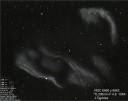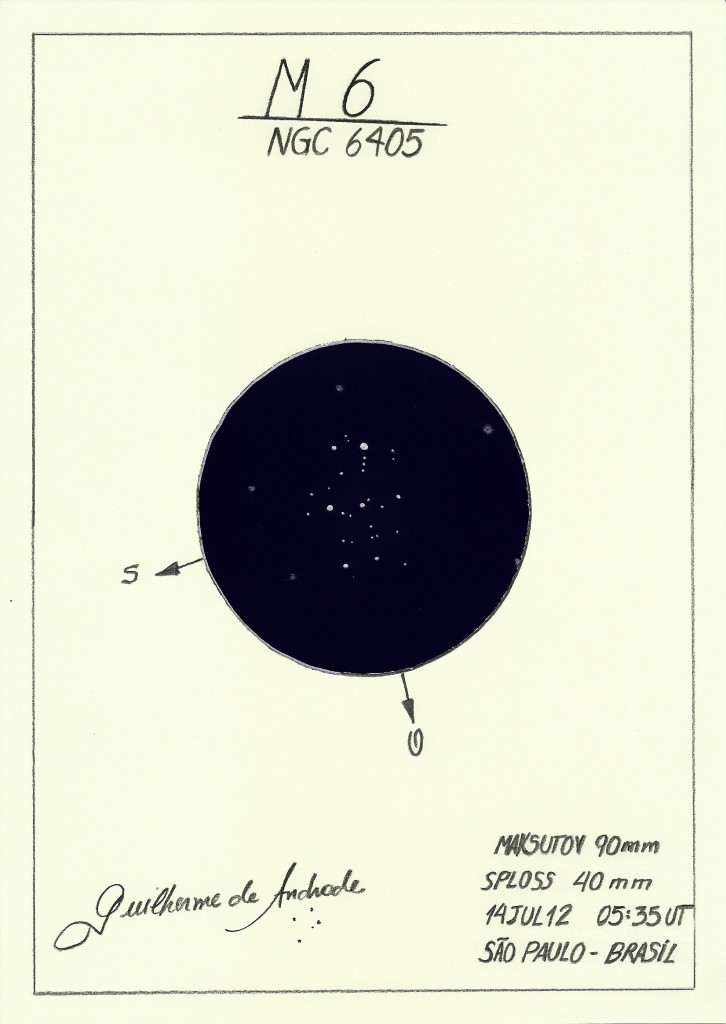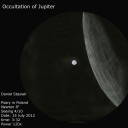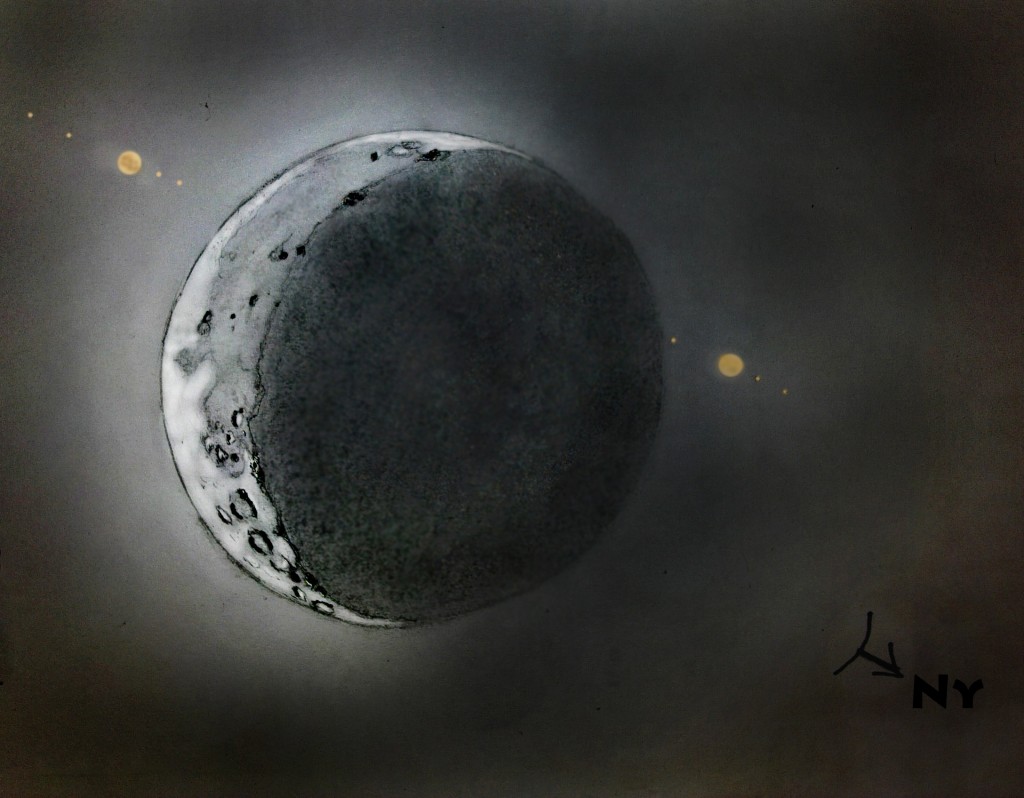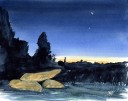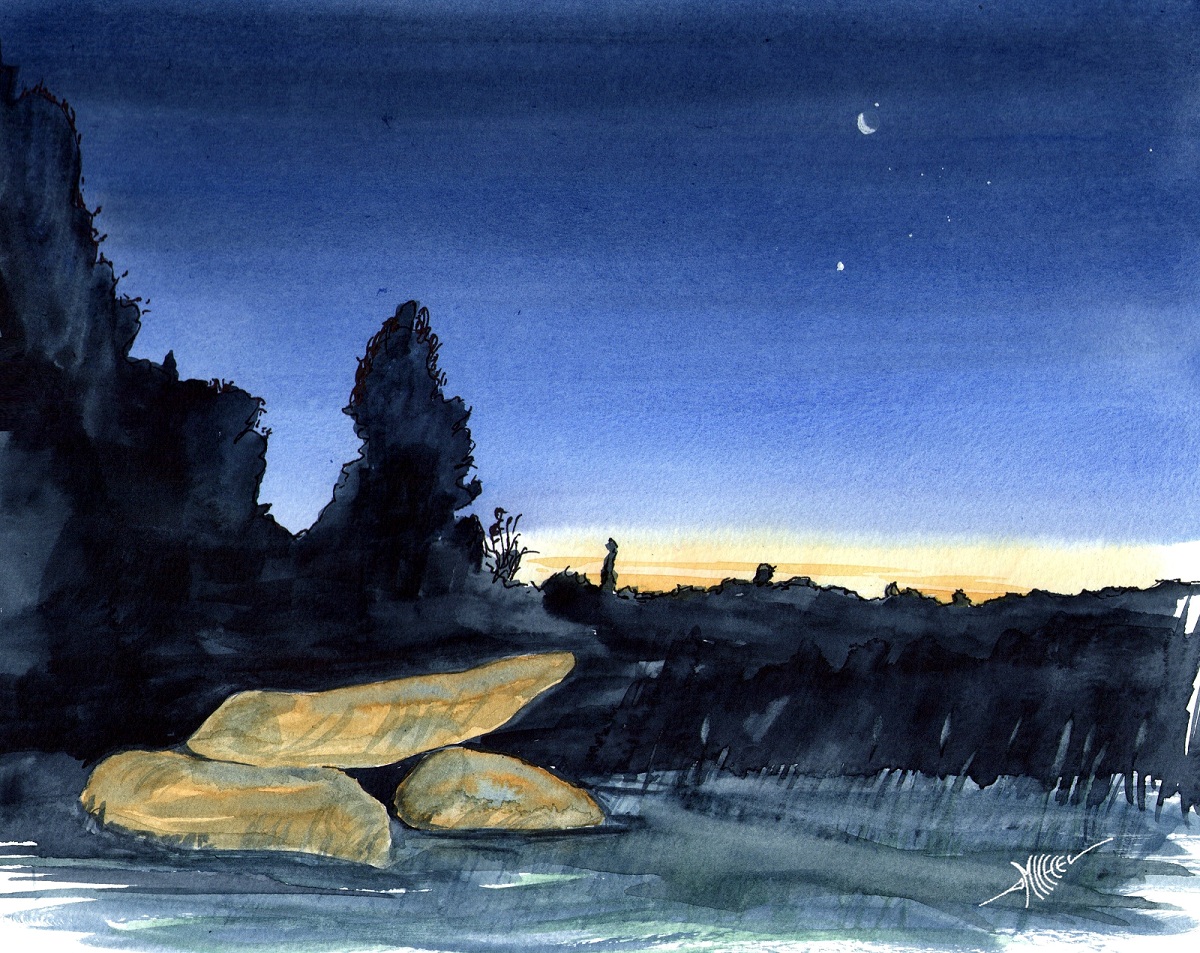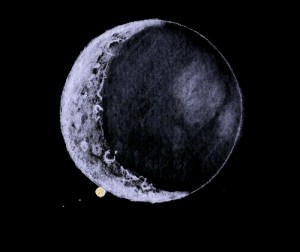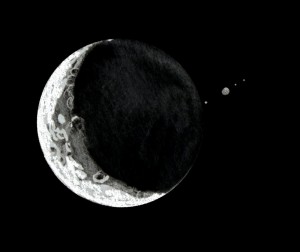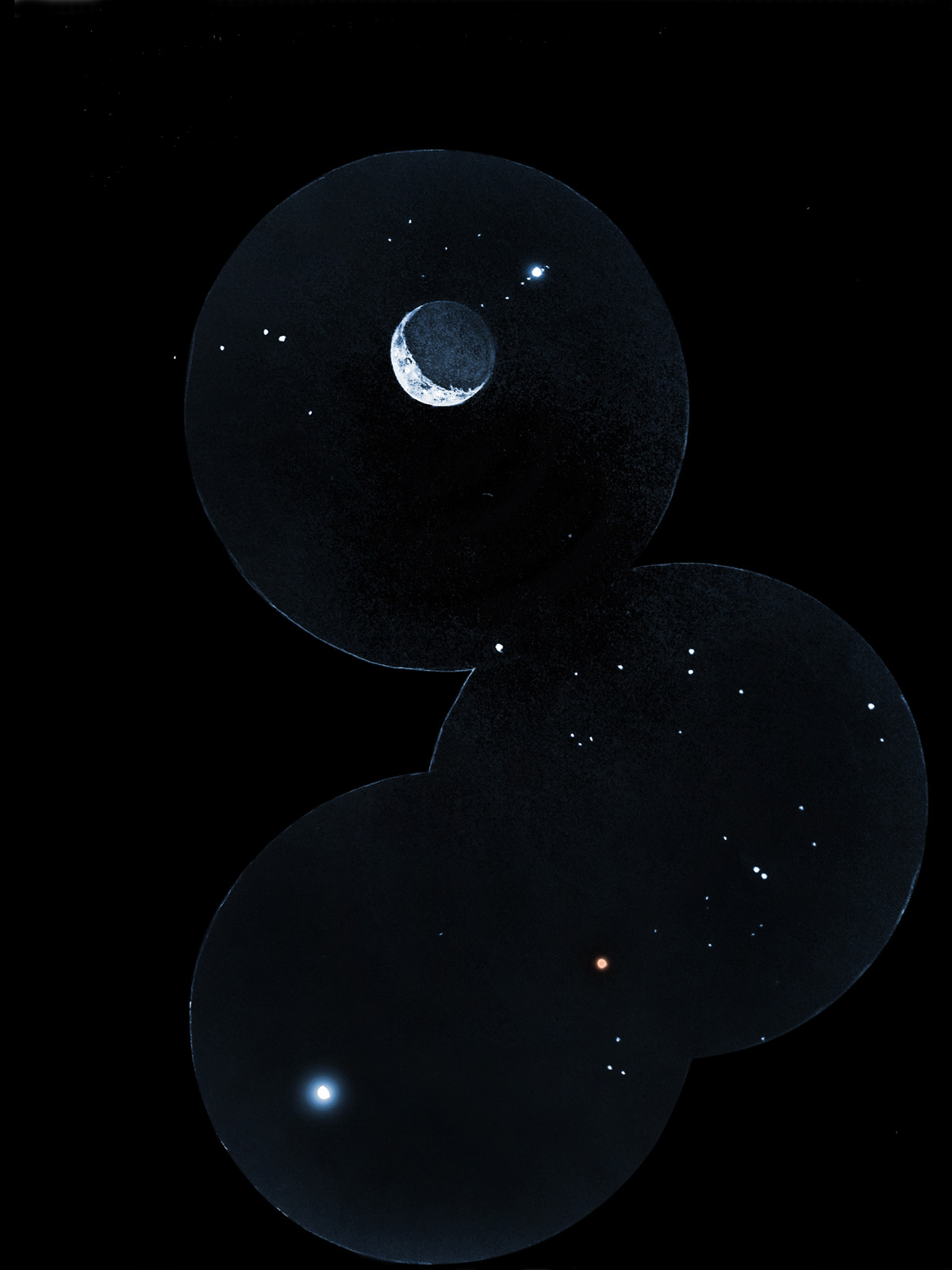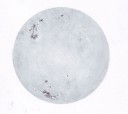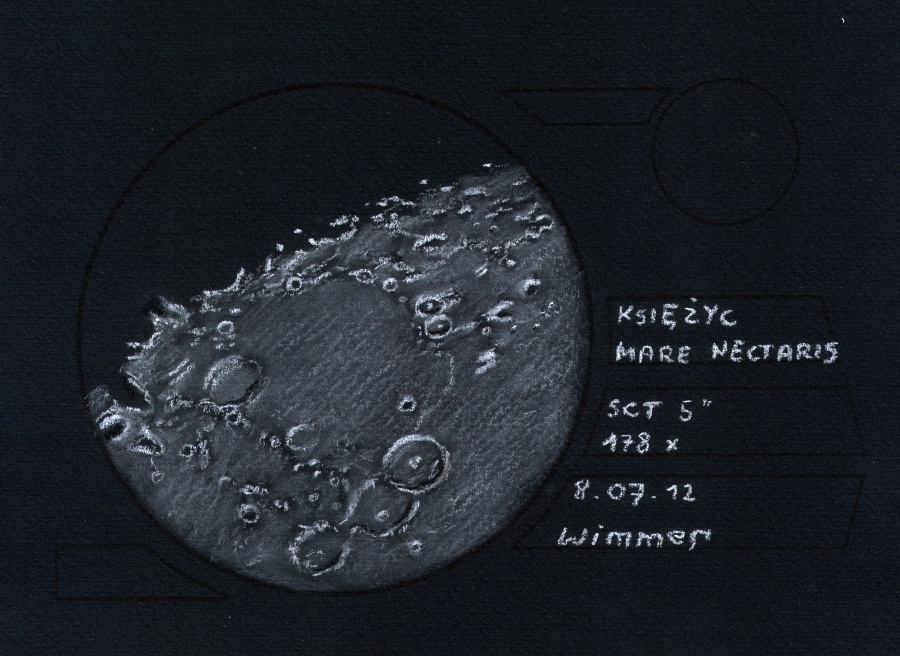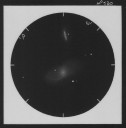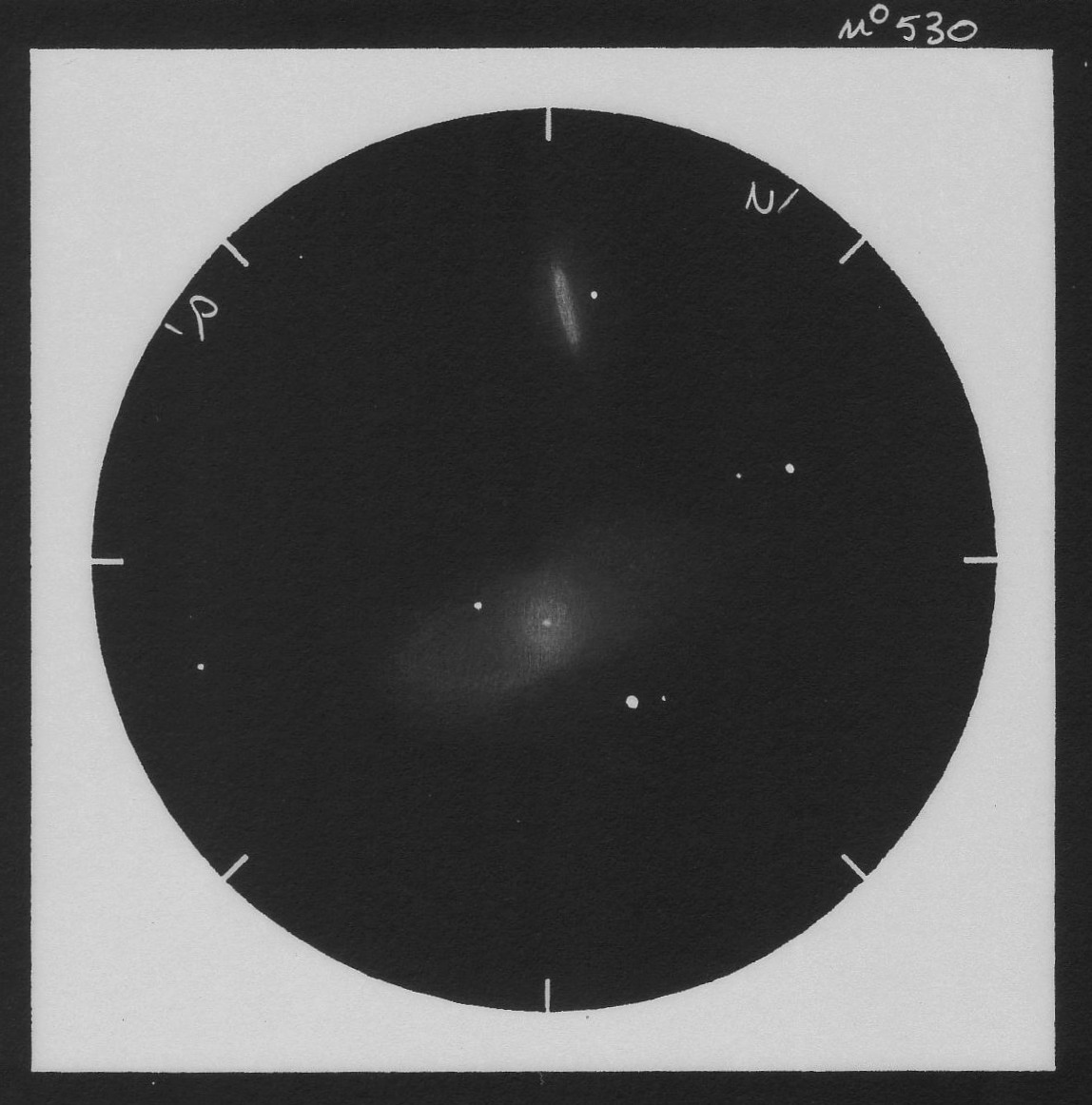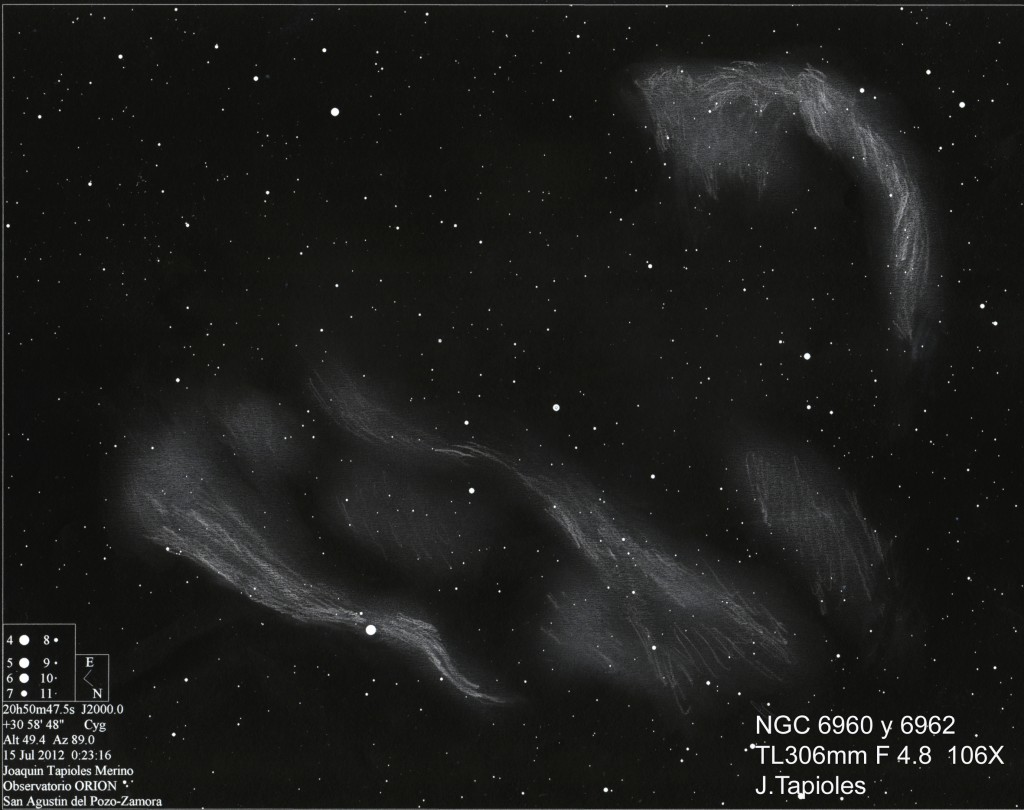
(Original text is in Spanish. English translation is at the bottom of the post.)
Nombre de objeto NGC 6960 y 6962
Tipo de objeto Nebulosas
Lugar Observatorio Astronomico ORION-San Agustin del Pozo- Zamora- España
Fecha 14 / 07/ 2012
Medios de Comunicación Lapiz de dibujo negro mas lapices de colores sobre una impresa del guide 9.0, Escaneado y invertidos los colores.
Los velos del cisne será una de las nebulosas mas bonitas del cielo vista con telescopios de buena abertura y con buenos cielos y usando algunos filtros como el UHC y el OIII. Estas nebulosas se observan mejor cuando están lo mas alto posible en el cielo y desde cielos contra mas negros mejor. NGC 6960 y 6992 son las partes más brillantes de la Nebulosa del Velo. Estas dos nebulosas fueron creados por una supernova hace unos 30.000 años, y tenemos la suerte de vivir en esta época qué aun es visible. 6960 pasa por detrás de 52 Cygni, una estrella a simple vista del ala oeste del Cisne. En esta sección se puede ver dividirse en las ramas bifurcadas. 6992 se encuentra a unos 2 grados de 52 Cygni y es algo más brillante que el 6960.
En mi 12″con un 20mm y un filtro OIII, el velo es increíble. 6992 tiene bucles y remolinos de nubosidad que dan un efecto tridimensional. Hay otras partes en la Nebulosa del Velo, la mayoría de ellos entre el dos secciones principales.
La mejor visión de ellos se consigue con oculares de gran campo y poco aumento y con un filtro OIII mejor que con UHC.
Los dibujos que vos presento se realizaron en una hora de observación con lápiz de dibujo sobre una carta del GUIDE 9.0
El dibujo de color se realizo después sobre el dibujo en blanco y negro y luego se invirtieron los colores. Después de realizar un dibujo de estos a una nebulosa la estampa de esta nebulosa se quedara para siempre en nuestra memoria.
Estas nebulosas se pueden ver desde cielos muy buenos casi con cualquier instrumento, pues yo he conseguido verla hasta con un simple TL de 60mm de abertura. El verano es la mejor época para ver este espectáculo.
Saludos;
Joaquin Tapioles
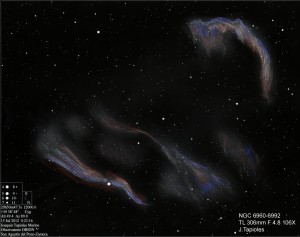
———————————————
English Translation via Google:
Name of object NGC 6960 and 6962
Object Type Nebulae
Location Astronomical Observatory ORION-San Agustin del Pozo-Zamora, Spain
Date 14/07/2012
Media Pencil drawing more black colored pencils on a printed guide 9.0, Scanning and inverted colors.
The veils of the swan is one of the most beautiful of the sky nebulas seen with good telescopes and good heavens opening and using some filters like UHC and OIII. These nebulae are seen best when they are as high as possible in heaven and from heaven against blacks but better. NGC 6960 and 6992 are the brightest parts of the Veil Nebula. These two nebulae were created by a supernova about 30,000 years ago, and we are lucky to live in this age which is still visible. 6960 passes behind 52 Cygni, a star with the naked eye of the west wing of the Swan. In this section you can see divided into forked branches. 6992 is about 2 degrees of 52 Cygni and is somewhat brighter than the 6960.
In my 12 “with a 20mm filter and OIII, the veil is incredible. 6992 has loops and swirls of clouds that give a three dimensional effect. There are other parts in the Veil Nebula, most of them between two main sections.
The best vision eye is accomplished with them high and low magnification field and with a filter OIII better than with UHC. The drawings that you presented were performed in a time of observation with pencil drawing on a letter of GUIDE 9.0 The colored drawing was held after the drawing in black and white and then inverted the colors. After making a drawing of these to the image of this nebula nebula will remain forever in our memory. These nebulae are visible from heaven very good with almost any instrument, for I have managed to see even a single aperture 60 mm TL. Summer is the best time to see this show.
Greetings;
Joaquin Tapioles
